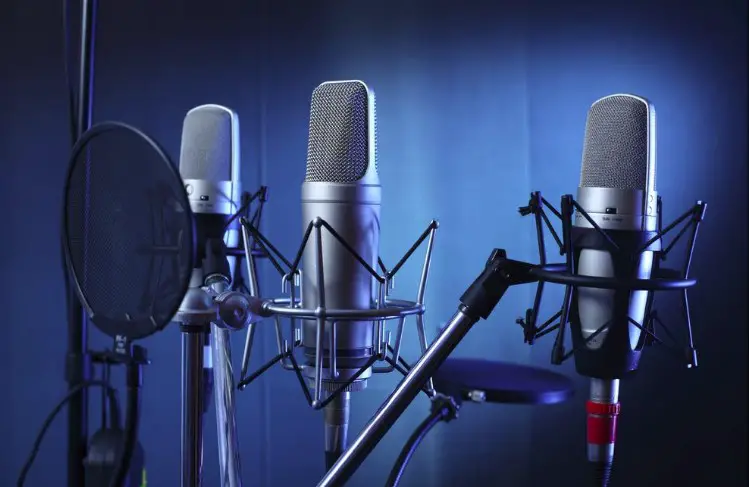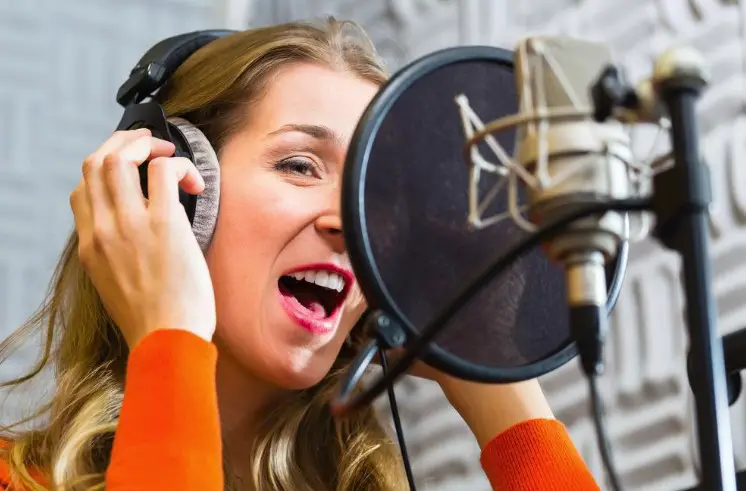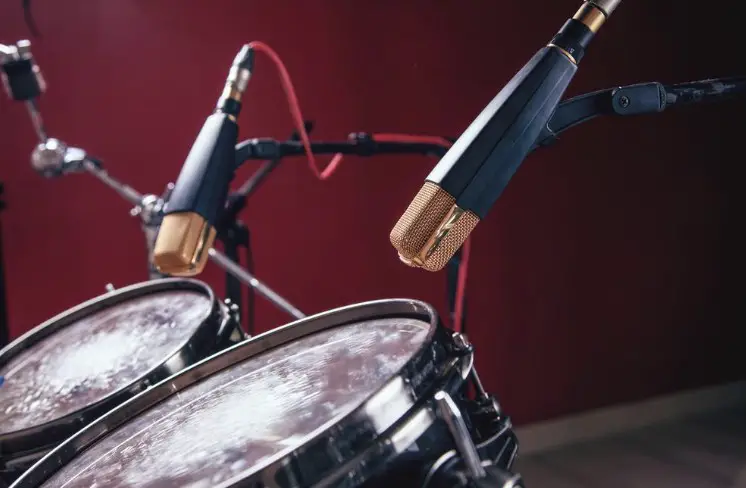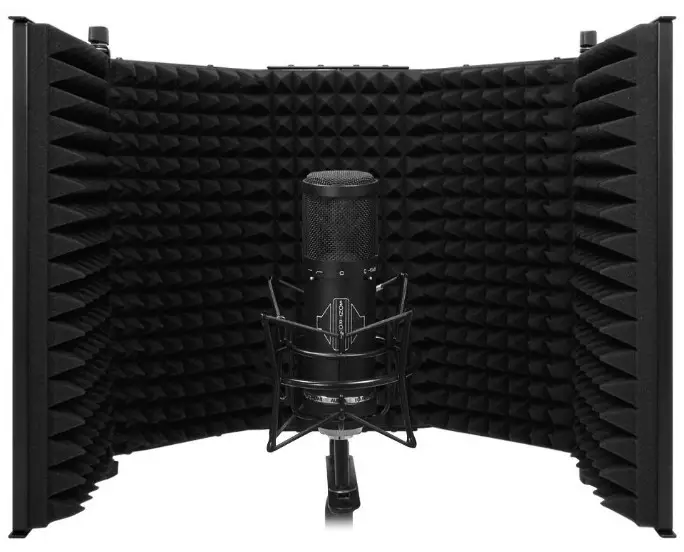Are you choosing your first studio microphone for home recording? You may get very overwhelmed by so many opinions and advices out there.

Honestly, I know that feeling, choosing the wrong mic can spoil your projects. So it’s great to have you here.
In this post, I’m going to share with you 3 essentials you must know before choosing the BEST studio microphones for your home recording.
This article is especially for music lovers and beginners who want to set up a small recording studio at home. I mean you will understand it easily even when you don’t know music and sound theory.
#1. Dynamic, Ribbon, and Condenser Microphone: Which one is best suited to your home studio?
I won’t waste your time by talking about the theory of microphones such as how they work.
I’m going straight to the points: benefits, pros, and cons of these microphones when applying them to your home recording studio.
1. Dynamic Microphones are BEST for multi-purpose
Dynamic microphones are durable and less affected by temperature and humidity. They reduce background noise very well.
 If you need a microphone for multi-purpose such as podcast, voice over, recording vocal and string instruments, the dynamic microphone is a good choice.
If you need a microphone for multi-purpose such as podcast, voice over, recording vocal and string instruments, the dynamic microphone is a good choice.
With around $100, you are easy to find a good dynamic microphone at Amazon.
I recommend you choose Shure SM series. They are cheap but surprisingly great for recording vocal as well as podcast, narration, or streaming.
2. Condenser Microphones are BEST for high-quality audio
Condenser microphones are more sensitive than dynamic microphones. It means that they can capture even very small detail sounds – their response to treble and bass is extremely good.

That is why you should choose condenser microphones in order to get high-quality audio recording.
However, the condenser microphones don’t reduce background noise as well as dynamic microphones do.
So you need a soundproof room or use a portable vocal booth for reducing noise during recording.
Note: Condenser microphones require external phantom power to work.
Most of the best audio interfaces have built-in phantom power but not always, so you need to check this feature of the audio interface before buying it.
If you don’t use an audio interface, or just want to connect the condenser microphone directly to your computer or laptop, the USB condenser microphones are the BEST choice.
Choosing Large-Diaphragm vs. Small-Diaphragm Condenser Microphone?
Large-diaphragm condenser microphones are very popular in recording studios. They are used for both recording vocals and acoustic instruments such as guitar, ukulele.
With around $100, I recommend Audio-Technica AT2020 Cardioid Condenser Studio Microphone.
Or choosing Audio-Technica AT2020USB+ Cardioid Condenser if you need a USB microphone.
I bought AT2020 with Scarlett solo audio interface a year ago.
In my opinion, the AT2020 is good for recording acoustic guitar, ukulele, and vocal. Even I don’t use pop screen when recording vocals, it reduces well ‘popping’ sounds like /p/, /s/, /t/.
As for small diaphragm condenser microphones, they are designed for recording instruments.
3. Ribbon Microphones is BEST for instrument recording
Just like dynamic, ribbon microphones don’t require external power.
They are very fast at the sound response, and used for recording instruments such as drum and guitars.

#2. You have to understand the Microphone Pickup Patterns
The directional characteristics of studio microphones or polar patterns (also referred to as pickup patterns) let you know which area microphone is most sensitive to incoming sounds.
There are 5 types of microphone polar patterns.
The picture below shows you the directional characteristics of each microphone polar pattern.

- Cardioid: Cardioid mics are designed to be sensitive to only one direction – the front of the mic, other sides are less/not sensitive. So a cardioid mic can perfectly pick up single sound sources while blocking ambient sound.
- Super-cardioid: As its name implies, super-cardioid mics have a narrower response pattern than cardioids. So it’s better at side rejection and more resistant to feedback than cardioid mics. However, they can still pick up a little sound from the back.
- Hyper-cardioid: Like super-cardioid, hyper-cardioid mics have a narrow pickup pattern but they tend to pick up more sound from the rear than a super-cardioid mic.
- Figure-8/Bi-directional: Bi-directional mics are designed to be sensitive to sound coming from the front and back, other sides are not sensitive.
- Omnidirectional: Omnidirectional mics pick up equally sound from all directions, and as a result, they’ll pick up ambient noise.
Which microphone polar pattern is popular and the BEST for your home recording studio?
Yes, the cardioid is popular and the best choice for personal records.
Why?
Please take a look back at the directional characteristics of cardioid microphones in the picture above, and you’ll see. Cardioid mics are sensitive to incoming sound in the front of the mic but not to the rear.
So it can reduce the ambient noise when recording a single vocal or instrument. The other polar patterns are sensitive to both the front and the back of mics. They are often used in stereo recording.
Note:
Stereo recording is a very complicated technique. It combines two or more mics (with the different directional characteristics) together.
In short, a cardioid microphone is the best choice for your home recording studios such as recording vocal, guitar, and ukulele.
#3. What about the frequency response and impedance of microphones?
1. Frequency response:
Frequency response will show you know the range of frequencies that microphone can capture and reproduce sound well.
Each microphone has specific frequency response chart. For example, Shure SM58 has frequency response from 50Hz to 15kHz.

When you “read” frequency response chart of a specific microphone, if the frequency-response-line is flat or close to flat, that microphone is good.
Come back to the SM57 Microphone Frequency Chart above, it shows Shure SM57 response is fairly flat in the 150Hz to 1.2kHz range.
It means Shure SM57 can work well in 150Hz – 1.2kHz range. At below 150Hz and upper 1.2kHz, the SM57 might capture and reproduce the sound with a little bit distortion.
In short, the frequency response chart shows important information about the tonal balance of the microphone. That helps you choose the right mic for your projects.
2. Impedance
The impedance of microphones is output-impedance and is measured in ohms. You just remember: the good studio mics have low impedance – less than 300 ohms.
High impedance microphones do not perform well at long distance (over 5 meters) cables because they produce audios with loss of high frequencies.
#4. The 3 useful microphone accessories must-have in your home recording studio
1. Pop Filter:
It looks simple but it works efficiently. With a pop filter, you can control mic’s bass response.
Particularly, the filter will reduce the blast of air when you’re making “P” or “B” sound, that kinds of sound are very hard to handle later.
It’ll also help you to keep a proper distance from the mic when recording at home.
2. Mic Stand & Shock Mount:
People are still divided on whether a shock mount is necessary for home recording or not.
In fact, your mics are very sensitive to vibrations such as foot tapping, your moving steps,…in your home studio.
Mic stand & shock mount are specially designed to prevent the mics from picking up these type of ambient noise.
3. Reflection Filter/Portable Vocal Booths:
With a reflection filter or “portable vocal booths” wrapping around your mics, you can really improve recording quality.

Thanks to its special material, a vocal booth work as an absorber and a diffuser to reduce sound reflection.
It’s very helpful for recording at home when you don’t want to build an entire model studio.
The last words
Choose the right microphone for your home recording studio is essential.
A good mic will help you get the quality audio, and you will not waste so many time for editing audio file on computer.
Hopefully my post help you have an overview about how to choose the best studio microphones.
